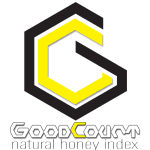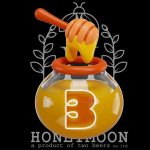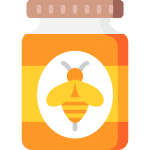“What Will Be the Future of Consumption, Production, and Buying and Selling of Natural Honey?“
What Will Be the Future of Consumption, Production, and Buying and Selling of Natural Honey?
- Introduction
Natural honey, often referred to as “liquid gold,” has been cherished for centuries for its medicinal, nutritional, and culinary properties. However, the landscape of honey consumption, production, and commerce is rapidly changing due to advancements in technology, shifting consumer preferences, and environmental challenges. What does the future hold for this beloved natural sweetener? Let’s explore the trends and factors that are shaping the future of natural honey.
1. **Evolving Consumption Patterns: Health and Wellness Take Center Stage**
The global shift toward health and wellness is transforming how people consume honey. Modern consumers are becoming increasingly aware of the benefits of natural, organic, and raw honey, which is rich in antioxidants, enzymes, and nutrients. This shift is pushing honey into the spotlight as a healthier alternative to processed sugars and artificial sweeteners.
– **Functional Foods Trend**: The demand for honey is growing as it is increasingly being used as a natural sweetener in functional foods and beverages, including energy bars, herbal teas, and even skincare products.
– **Personalized Nutrition**: With advancements in nutrigenomics (the study of how food affects our genes), honey consumption may become more personalized. For instance, different types of honey, such as Manuka or Acacia, could be recommended based on an individual’s unique health needs.
– **Medicinal and Therapeutic Uses**: Honey’s antibacterial and anti-inflammatory properties are driving its use in alternative medicine and wellness products, such as honey-infused supplements and therapeutic skincare.
2. **Transforming Production Methods: Balancing Tradition with Innovation**
The production of honey is also undergoing significant changes. Traditional beekeeping is being complemented by innovative practices that aim to enhance sustainability, quality, and efficiency.
– **Urban Beekeeping and Vertical Hives**: As urbanization continues, urban beekeeping is gaining popularity. Rooftop gardens and urban farms are becoming home to beehives, promoting local honey production while supporting biodiversity in cities.
– **Technology-Driven Beekeeping**: Innovations like AI-driven hive monitoring, drone-assisted pollination, and blockchain for tracking honey purity are revolutionizing honey production. These technologies help optimize hive health, prevent diseases, and ensure traceability and quality assurance.
– **Sustainable Practices and Bee Health**: With the rising awareness of colony collapse disorder and its impact on global food security, sustainable beekeeping practices are becoming a priority. The future of honey production will likely focus on enhancing bee health through organic farming practices, reducing pesticide use, and conserving native bee habitats.
3. **Future of Buying and Selling: A Shift Toward Transparency and Sustainability**
The way natural honey is bought and sold is also evolving, with a significant push towards transparency, sustainability, and ethical sourcing.
– **Direct-to-Consumer (D2C) and E-commerce**: The rise of online platforms and e-commerce has made it easier for consumers to buy honey directly from beekeepers and small-scale producers. This trend allows for greater transparency, fresher products, and the ability to support local businesses.
– **Blockchain and Traceability**: Blockchain technology is being leveraged to enhance transparency in the honey supply chain. Consumers are increasingly demanding proof of origin and purity, and blockchain can provide a tamper-proof record of honey’s journey from hive to table.
– **Sustainable Packaging and Zero-Waste Shops**: Eco-conscious consumers are influencing packaging trends. The future may see more honey being sold in recyclable or reusable containers, as well as bulk options in zero-waste stores, to reduce environmental impact.

type i honey moon blue light circle
4. **Challenges and Opportunities Ahead**
While the future of natural honey is promising, it is not without challenges. Climate change, habitat loss, and the use of harmful pesticides continue to threaten bee populations globally. However, these challenges also present opportunities for innovation and growth.
– **Climate Resilience**: Research and development into climate-resilient bee species and adaptive beekeeping practices are crucial to ensuring honey production remains viable in the face of changing weather patterns.
– **Consumer Education and Advocacy**: Educating consumers about the importance of supporting sustainable honey practices can drive demand for responsibly sourced honey and promote policies that protect bee populations.
– **Innovative Honey Alternatives**: As honey becomes a more premium product, there may also be a rise in the development of honey alternatives, such as plant-based or lab-grown honey, catering to vegan consumers or those with ethical concerns.
5. **Conclusion: A Sweet Future Awaits**
The future of consumption, production, and buying and selling of natural honey is set to be shaped by technological advancements, sustainability efforts, and evolving consumer preferences. With the right balance of tradition and innovation, the honey industry can continue to thrive while supporting both human health and environmental sustainability. As we move forward, it is essential to support practices that prioritize bee health, ensure transparency, and promote the natural goodness of honey for generations to come.

 عسل گودکرت
عسل گودکرت عسل هانی مون
عسل هانی مون عسل تایپ یک
عسل تایپ یک عسل تایپ دو
عسل تایپ دو عسل تایپ سه
عسل تایپ سه عسل تایپ چهار
عسل تایپ چهار





 عسل گودکرت
عسل گودکرت